Understanding the Costs of Wasp Removal Services
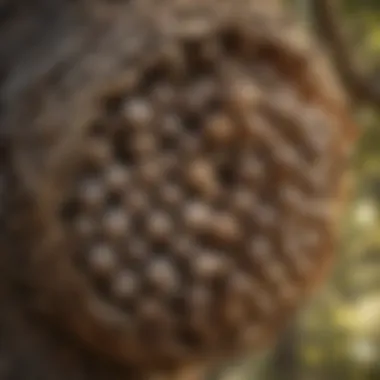
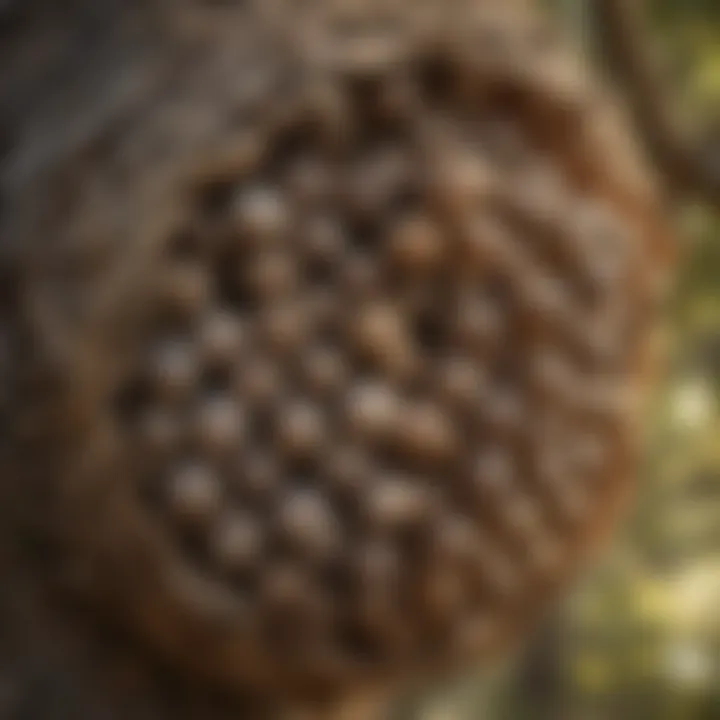
Intro
Wasp removal can pose unique challenges for homeowners. The costs associated with this process vary significantly based on various factors. Understanding wasps and the expenses for their removal can empower homeowners to make informed decisions. This article aims to provide a detailed overview of these costs while exploring the effectiveness of different removal methods, including both professional pest control services and do-it-yourself approaches. By evaluating these insights, readers can find the most suitable strategy for their needs.
Understanding Pests
Definition of Pests
Pests are organisms that negatively affect human activities, structures, or food supplies. Wasps, in particular, fall into this category. They can invade homes and yards, causing fear and potential harm. Identifying wasps correctly is essential. They vary from beneficial species to aggressive ones, and knowing which type you are dealing with can impact your approach to removal.
Importance of Pest Identification
Correct pest identification is vital. Not all wasps pose the same threat. Some assist in pollination and controlling other pests. Understanding their behavior also informs methods of removal. Misidentifying a wasp could lead to improper handling and could escalate a situation.
"Effective pest control starts with proper identification, ensuring that the chosen method is appropriate for the situation."
Prevention Techniques
Home and Garden Preventative Measures
Preventing a wasp infestation starts at home. Here are some effective strategies:
- Seal entry points: Use caulk to seal cracks and crevices in walls and foundations.
- Remove food sources: Keep garbage well-contained. Store food in airtight containers outside.
- Maintain cleanliness: Clear away spills and debris in outdoor areas.
Seasonal Prevention Tips
Seasonal changes often dictate pest behavior. Certain times, particularly late summer, see an increase in wasp activity. Homeowners should be especially vigilant during this period. Planning for seasonal changes can include:
- Inspecting nests: Look for nests early in the season. Remove them if found, ensuring safety measures are in place.
- Trimming shrubs: Keeping plants well-trimmed can reduce potential nesting sites.
Eco-Friendly Pest Control Solutions
Overview of Sustainable Practices
More homeowners are interested in eco-friendly pest control methods. This approach minimizes harm to beneficial insects and the environment. Sustainable practices include:
- Using traps: Non-toxic traps can be effective in capturing wasps without poison.
- Natural deterrents: Citrus scents can naturally repel wasps. Consider using essential oils like peppermint or lemongrass.
Natural Remedies and Their Effectiveness
Many seek out natural remedies instead of chemical solutions. While some methods, like soap and water sprays, are inexpensive, their effectiveness may vary. Here are some popular options:
- Vinegar traps: Combining vinegar with sugar can attract and trap wasps.
- Essential oils: Spraying diluted essential oils may provide temporary relief from wasps in your vicinity.
Preamble to Wasp Issues
The topic of wasp control is vital for homeowners. Wasp infestations can cause discomfort and potential health risks. Understanding the issues surrounding these pests can lead to better decision making. This section will cover how wasps behave, their species types, and factors influencing their behavior. Homeowners can benefit by gaining insights into these elements.
Understanding Wasp Behavior
Wasp behavior is complex. They are social insects, living in colonies. This impacts how they react to threats. Wasps are generally aggressive when they feel their nest is in danger. This is important for homeowners to know. When considering removal, understanding their behavior helps in the selection of methods. Knowing what triggers their aggression can help in avoiding confrontation.
Moreover, different species exhibit distinct behaviors. For example, yellow jackets are known to be more aggressive than other species. This understanding influences the approach a homeowner may choose for removal. Recognizing these traits reduces risks and enhances safety during the removal process.
Identifying Wasp Species
Properly identifying the type of wasp is essential. There are several species, including yellow jackets, paper wasps, and hornets. Each has its own characteristics and nesting habits. Yellow jackets often build nests in the ground or hidden areas like wall cavities. Paper wasps prefer to build nests in exposed areas, often seen hanging under eaves or branches.

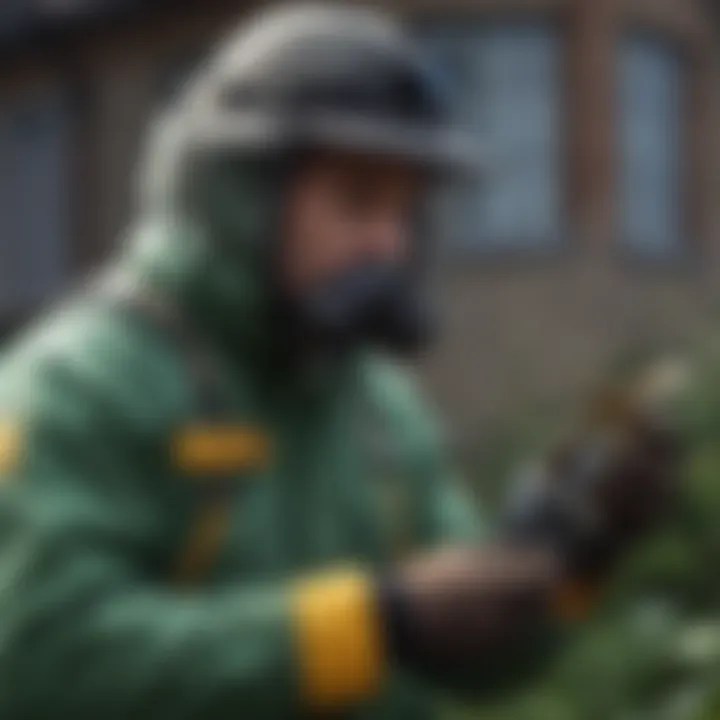
Misidentification can lead to ineffective removal strategies. It is important for homeowners to familiarize themselves with these species. Resources like Wikipedia provide visual examples. This knowledge can save time and reduce unnecessary costs. By knowing which wasp is present, one can better prepare for removal, whether deciding to attempt it themselves or hire a professional pest control service.
Factors Influencing Wasp Removal Costs
Understanding the costs involved in wasp removal is critical for homeowners facing infestations. Different elements affect these costs, making it essential to assess them before deciding on a course of action. Factors such as the type of nest, the location where the nest is found, and the severity of the infestation can greatly influence both the financial and logistical aspects of removal.
Type of Wasp Nest
The type of wasp nest significantly affects removal costs. Wasp species such as paper wasps, yellow jackets, or hornets have varying nesting habits. For instance, paper wasps build open, umbrella-shaped nests that are easier and less expensive to remove compared to yellow jackets, which construct nests underground or in cavities.
- Paper Wasps: Usually less aggressive, their nests can be removed without much hassle.
- Yellow Jackets: More aggressive and likely to sting, these nests often require professional intervention.
- Hornets: Their large nests and aggressive nature make removal risky, often resulting in higher costs.
Identifying the type of wasp nest is paramount to determining the right removal strategy and corresponding costs. If the nest is hard to access, it may also require specialized tools and techniques, which can increase the overall expense of the service.
Location of the Nest
The nest's location is another crucial factor in estimating wasp removal costs. Nests situated in difficult-to-reach places, such as high up in trees or within the walls of a house, will require more time and equipment to address.
- Accessible Locations: These nests can be removed easily, usually at a lower cost.
- Difficult Locations: If the nest is located in a challenging area, professionals may have to invest in ladders or lifting equipment.
- Interior Locations: Nests hidden within walls or ceilings often need extensive work to locate and remove. This can significantly drive up costs due to the additional labor involved.
In summary, the location of the wasp nest can mean the difference between a straightforward or complicated removal procedure, thus influencing the overall cost.
Severity of Infestation
The severity of the wasp infestation also plays a key role in determining removal costs. A minor infestation might only require the removal of a single nest, while a severe case could entail multiple nests or large populations that require comprehensive treatment.
- Minor Infestations: Generally, these are less costly and can often be resolved with a single visit from a pest control service.
- Moderate Infestations: These may involve several nests and require follow-up visits, increasing the total costs.
- Severe Infestations: Extensive infestations require thorough planning and execution, likely leading to a significantly higher expense due to labor, time, and multiple treatments.
Overall, understanding the severity of the infestation is paramount. It helps homeowners prepare for a realistic budget and necessary steps, ensuring effective elimination of the pests without underestimating the situation.
"Proper assessment of these influencing factors can lead to informed decisions and potentially save homeowners considerable amounts of money."
Professional Wasp Removal Services
When dealing with wasp infestations, considering professional services is often a critical step for homeowners. While DIY methods might seem tempting, hiring specialists has many unique advantages. First, trained pest control experts carry the right equipment and expertise to address complex infestations safely and effectively. They understand wasp behavior and can identify the species involved, ensuring an appropriate and targeted approach.
From a financial perspective, the cost of professional wasp removal may vary based on multiple factors. However, the investment often outweighs the potential risks and expenses associated with inadequate removal. Accidental stings, damage to property, or using ineffective methods can lead to additional costs later.
Also, credibility is essential. Established pest control companies usually provide guarantees for their services. This gives homeowners peace of mind knowing that if the problem persists, further actions will be taken withoutadditional expense.
In addition, efficiency is another primary consideration. Professionals can typically remove nests much faster than DIY attempts, leading to minimal disruption in daily life. These reasons highlight why finding the right professional pest control service is a priority for homeowners.
Cost Breakdown of Hiring Professionals
The costs associated with professional wasp removal can fluctuate based on various factors, including the location, the type of nest, and the level of infestation. On average, homeowners can expect to pay anywhere between $100 to $500 for professional services, depending on the complexity of the job.
- Inspection Fees: Some companies charge a fee for the initial inspection, which can range from $50 to $100.
- Nest Removal Charges: This is typically where the bulk of the cost lies. For example, removing a single nest might cost between $150 to $300. However, if the infestation is extensive or hidden within walls, costs can escalate.
- Additional Treatments: If wasps are likely to return, companies may recommend follow-up treatments, which can add $50 to $100 more to the overall cost.
Be mindful of hidden fees when considering a pest control service. Request a transparent estimate before proceeding to avoid unexpected costs.
Choosing a Pest Control Company
Selecting the right pest control company is imperative for effective wasp removal. Homeowners should look for specific criteria that reflect the company’s expertise and reliability.
- Experience: Choose a company that has substantial experience in pest control, particularly in wasp removal. Seeking reviews and references can provide valuable insight.
- Certifications: Ensure that the company is licensed and insured. This provides protection and indicates adherence to industry standards.
- Methodology: Inquire about the methods used. Eco-friendly approaches can be beneficial if you prioritize environmental safety alongside effective removal.
- Follow-Up Services: A reputable company often provides follow-up services to ensure the infestation does not recur.
Engaging with professionals who prioritize customer satisfaction and safety will result in a better experience and outcomes.
Insurance and Wasp Removal
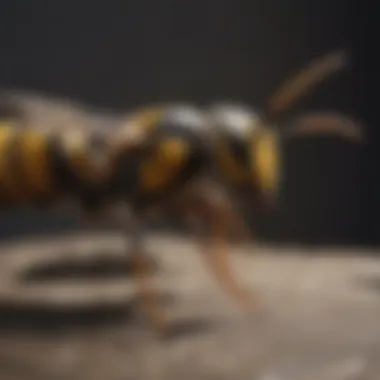

Homeowners should also be mindful of how insurance may influence the costs of wasp removal. Not all insurance policies cover pest control services, but it’s worth investigating whether your homeowners’ insurance can assist with some of the expenses.
- Check Your Policy: Review your insurance policy and contact your provider for clarity on coverage regarding pest control services.
- Document the Infestation: Taking photographs and keeping records of any damages or stings related to wasps will strengthen your case when filing a claim.
- Liability Considerations: If hiring professionals, check if they carry liability insurance. This protects you in case of accidents during the removal process.
Understanding the interplay between insurance and pest control is vital for efficient financial planning regarding wasp issues. Being informed will help mitigate potential costs and ensure effective management.
DIY Wasp Removal Methods
Wasp removal can be an intimidating task for many homeowners. It is vital to understand the various methods of DIY removal before deciding on the best approach. These methods not only offer potential cost savings but also provide homeowners with the tools to deal with pest control in their own hands. In some cases, tackling the problem by oneself is practical and effective. However, this comes with its own set of challenges and considerations. A well-informed approach can lead to successful outcomes while reducing hassle.
Basic DIY Approaches
There are several basic techniques for removing wasps on your own. One common approach is using insecticidal sprays. These can be found at most hardware stores and offer a fast-acting solution to eliminate wasps on contact. Another method is to create traps using simple household items. Making a trap from a plastic bottle or jar can help capture and reduce the wasp population. This method typically involves attracting wasps with sugary substances, which can be effective during the warmer months.
Here are a few methods to consider:
- Insecticidal sprays: These sprays can effectively kill wasps on contact. It is important to choose one that specifically targets wasps.
- Homemade traps: Using sugar water or fruit juice in a trap can lure wasps away from nests.
- Soaps and water: A solution of soap and water can suffocate wasps if sprayed directly on them.
These approaches can serve as initial steps, but they require caution and awareness of surrounding conditions.
Costs of DIY Materials
When considering DIY methods for wasp removal, the cost of materials is a significant factor to address. The overall expense usually remains lower compared to hiring professionals. For example, insecticidal sprays can range from $5 to $20. Homemade traps can be created using inexpensive materials, such as bottles and food items, leading to perhaps just a few dollars spent.
Here’s a breakdown of average costs:
- Insecticidal sprays: $5 - $20
- Sugar or fruit juices for traps: $2 - $5
- Plastic bottles: $1 - $3
While DIY options tend to be financially more approachable, they may not always lead to a complete resolution of the problem. It's important to carefully analyze the efficiency of methods undertaken.
Safety Considerations
Safety is paramount when engaging in DIY wasp removal. Wasps can be aggressive, especially when their nests are disturbed. It is crucial to exercise caution to minimize the risk of stings. Some steps to ensure safety include:
- Always wear protective clothing, such as long sleeves and gloves.
- Avoid wearing bright colors or floral patterns, as these can attract wasps.
- Do not attempt to remove nests during the day when wasps are most active; early morning or late evening is preferable.
- If allergic reactions to stings are known, keep necessary medical supplies nearby.
"Preparation and caution can significantly reduce the danger involved in DIY wasp removal."
In summary, while there is potential for cost-effective methods to manage wasp situations, awareness and preparation are key to executing DIY removal safely and effectively.
Eco-Friendly Wasp Control Options
In recent years, there has been a growing emphasis on eco-friendly methods for pest control, particularly with regard to wasps. Traditional wasp removal can sometimes involve toxic chemicals that not only affect the target species but also pose risks to other wildlife and humans. This section explores the importance of eco-friendly wasp control options and outlines several effective approaches, highlighting their benefits and considerations.
Natural Repellents
Natural repellents are an effective way to discourage wasps from entering your space without resorting to synthetic pesticides. Common natural ingredients that act as repellents include peppermint oil, vinegar, and citrus scents.
- Peppermint Oil: This oil can deter wasps simply due to its strong scent, which they find unappealing. A mixture of water and peppermint oil can be sprayed around areas where wasps enter.
- Vinegar: Wasps tend to dislike the smell of vinegar. Filling a bowl with vinegar can act as a barrier and help minimize wasp activity nearby.
- Citrus: Many homeowners have found success using citrus peels scattered around their homes as a natural deterrent.
Using natural repellents has the dual benefit of preserving the environment while ensuring your living space remains wasp-free. However, it is important to note that these methods may require frequent applications due to their less durable nature compared to chemical solutions.
Attractants and Traps
Eco-friendly traps are another method that can significantly reduce wasp populations without harming the ecosystem. These traps can be made from simple materials and often utilize common kitchen ingredients to attract wasps.
- Homemade Traps: A simple trap can be created by cutting a plastic bottle in half. The bottom section can be filled with a mixture of sugar, water, and a few drops of dish soap to attract and trap wasps.
- Commercial Traps: Brands like Rescue and Terro offer eco-friendly traps that are designed to catch wasps without chemicals. They often use pheromones to lure in wasps.
These traps can help control wasp populations over time, effectively reducing infestations. They can be placed strategically around entry points, combined with natural repellents for a comprehensive approach.
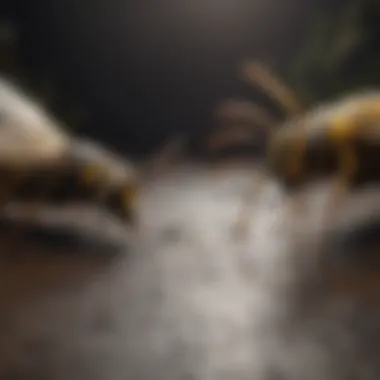
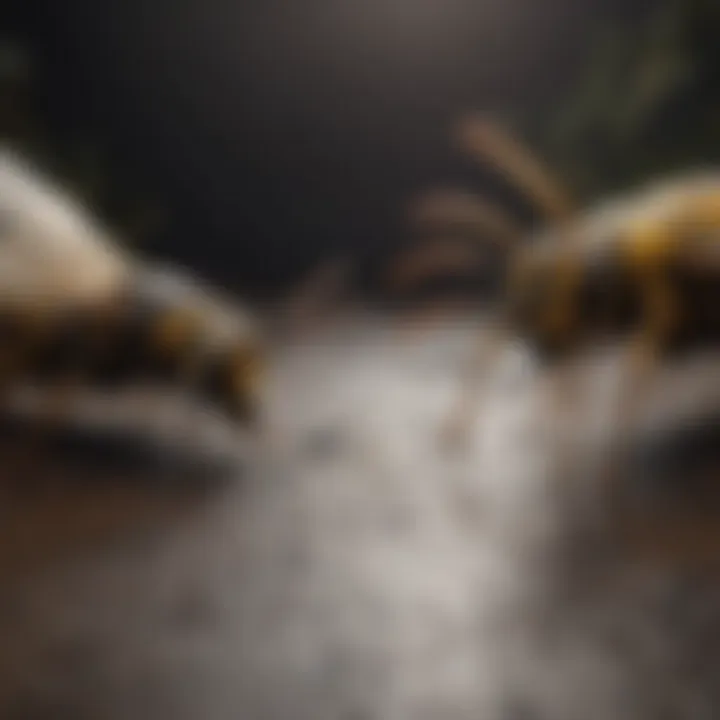
Long-term Prevention Strategies
To ensure a lasting solution to wasp issues, it is essential to adopt long-term prevention strategies. By implementing these strategies, homeowners can minimize the chances of future infestations while being mindful of the environment.
- Regular Inspections: Regular inspections of your property can help identify potential nesting sites early. Look for secluded areas such as eaves, tree branches, and under decks.
- Food Management: Keeping food waste sealed and discarding trash frequently can reduce food sources that attract wasps. Regularly clean outdoor dining areas to minimize leftover food debris.
- Sealing Entry Points: It's important to seal any small entry points around your home. Wasps enter homes through small openings, and fixing these can prevent them from making nests near your living space.
Implementing these long-term strategies not only decreases the allure of your home to wasps but also contributes positively to the ecosystem by reducing reliance on chemical pesticide solutions.
Wasp Removal and Environmental Impact
Wasp removal is not just a matter of household safety; it also holds significant implications for the environment. The act of removing wasps, particularly on a large scale, can disturb ecological balances. Therefore, understanding the environmental impact of wasp control is crucial for both homeowners and pest management professionals. This section explores how wasp removal can affect local biodiversity, why wasps matter in our ecosystems, and how effective management strategies can mitigate negative outcomes.
Understanding Wasp Ecological Roles
Wasps play an essential role in various ecosystems. They are not only important pollinators but also serve as natural pest control agents. By preying on common garden pests, such as aphids and caterpillars, wasps help maintain the health of plants and crops.
Additionally, wasps contribute to the food web. Many species, including birds and mammals, rely on wasps as a food source. The elimination of wasps can disrupt these food chains and lead to unforeseen consequences in local wildlife populations.
Sustainability is key. By recognizing the essential roles that wasps occupy, homeowners can make informed decisions regarding their removal. Acknowledging their ecological functions will foster a more balanced view on pest management.
Balancing Removal with Biodiversity
The process of removing wasps should not disregard the need for biodiversity. An essential consideration is to balance necessary pest control with the preservation of beneficial insect populations. Effective management approaches can minimize environmental damage while ensuring safety for homeowners. Here are crucial points to consider:
- Selective Removal: Instead of blanket removal, targeting only specific nests can prevent broader ecological disruptions.
- Non-lethal Methods: Many eco-friendly options exist that allow for wasp control without killing them. Traps that capture without harming can be effective.
- Education on Local Species: Homeowners should familiarize themselves with local wasp species. Understanding which ones are beneficial versus harmful can influence removal strategies.
To summarize, while wasp removal is necessary for safety, it should be approached with a mind towards environmental stewardship. Addressing the ecological implications of wasp removal can aid in creating strategies that serve both people and nature effectively.
"Every action has consequences. In pest management, the goal is to achieve safety while promoting ecological health."
By integrating these considerations into the wasp removal process, homeowners can help maintain a balanced ecosystem, ensuring the longevity of both their properties and the environment.
Post-Removal Strategies
The significance of post-removal strategies cannot be overstated after a wasp removal operation. Addressing wasp infestations demands not only immediate action but also long-term planning. Effective post-removal practices ensure that the area stays safe, minimizes the chances of re-infestation, and enhances the overall environment. A thorough understanding of these strategies can save homeowners from unnecessary repeat treatments and contribute to a more secure living space.
Assessing the Area after Wasp Removal
Once the wasps have been successfully removed, it is essential to assess the area where the nest was located. This evaluation should focus on any remaining signs of wasp activity, such as nests or dead wasps. It's also important to inspect structures and plants nearby. This inspection can reveal structural damages that may have contributed to the wasp infestation. Homeowners should take notes on any areas that may need repair or additional treatment before sealing spaces that might attract wasps in the future.
A keen observation can also help identify potential entry points. Check for small openings around window screens or under eaves. These gaps can become new nesting sites if not addressed in a timely manner. Knowing how to properly assess the area leads to better decisions about how to strengthen the defenses against future invasions.
Preventing Future Infestations
Preventing future infestations is a critical aspect of managing wasp issues. Homeowners should consider multiple approaches. For starters, sealing entry points around the home can significantly decrease the likelihood of nests forming. This includes tightly fitting door and window screens, sealing cracks and crevices, and reinforcing soffits.
Another effective approach is to maintain cleanliness in outdoor areas. Food left outside, including pet bowls and garbage bins, can attract wasps. Make sure that picnic areas and decks are properly cleaned after meals. Consider using tight-fitting lids on trash receptacles.
Creating a less hospitable environment is also key. Some homeowners have found success in removing or relocating plants that are known to attract wasps. Flowers such as clover and some fruit-bearing plants can draw wasps if they are too close to the home. Additionally, it may be prudent to utilize natural deterrents. For instance, essential oils like peppermint have shown efficacy in repelling wasps.
In summary, effective post-removal strategies are essential in dealing with wasp infestations. By assessing the area post-removal and implementing preventive measures, homeowners can significantly decrease the likelihood of future infestations and maintain a safer living environment.
Finale
In this article, we have explored the various aspects of wasp removal costs, ranging from professional services to DIY methods. Understanding these costs is crucial for homeowners facing wasp infestations. The financial implications can significantly vary based on factors such as the type of wasp nest, its location, and the severity of the infestation.
The decision to hire professionals for wasp removal or to attempt a DIY approach can depend on several elements. Professionals provide expertise that may safeguard against injury and ensure effective removal. On the other hand, DIY methods can be less expensive but require careful consideration of safety and potential ineffectiveness.
Furthermore, we examined eco-friendly options and the environmental impact of wasp removal. Homeowners must weigh the benefits of removing wasps against the ecological roles these insects play.
In summary, educating oneself about wasp removal costs empowers homeowners to make informed choices. Whether opting for professional services or a DIY approach, understanding the associated costs and methods lays the groundwork for effectively managing wasp infestations.
"Knowledge about costs and methods makes the process of wasp removal less daunting for homeowners."
Being aware of preventive strategies can further enhance long-term pest control efforts, ensuring a safer and more comfortable home environment.



